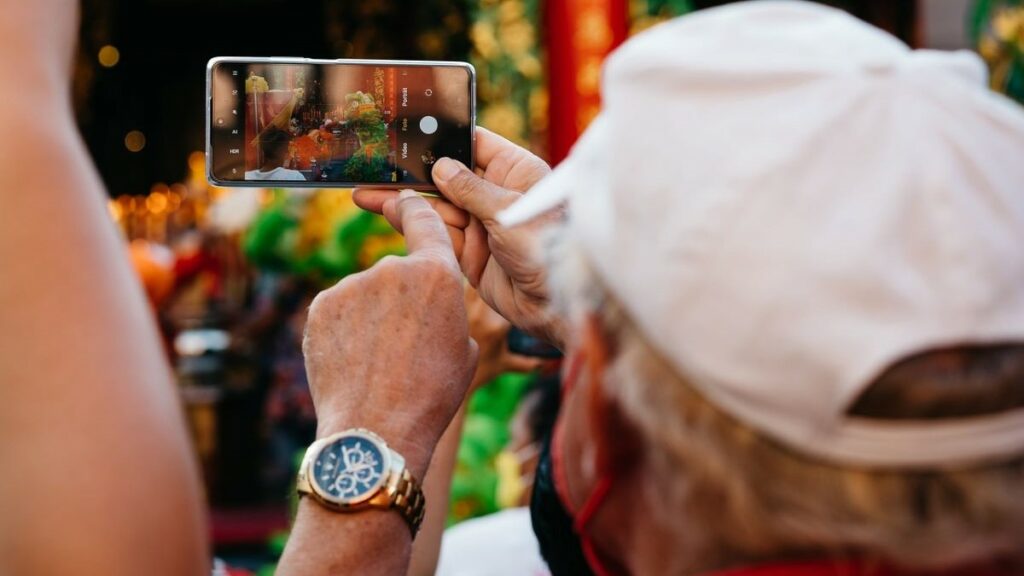Featured image by Markus Winkler via Pixabay
As smartphones continue their development into ever-present consumer companions, marketing content must adapt to the seemingly limitless potential of modern devices and their capabilities, including the use of mobile video.
Today, mobile video has become a leading way to gain the attention of target audiences. This is particularly true if profiles match younger demographics.
Video content has historically been expensive and difficult for small businesses to master. These days, however, the barriers to entry are continuing to fall. Today, any attention-grabbing video campaign holds the potential to encourage users to stop scrolling. Often, they do. And when they do, they give valuable time to consuming video ads on social media.
As smartphones continue to grow in their power and capabilities, marketers have more opportunities than ever to resonate with the right audience at the right time.
Recognizing the Potential of Mobile Video
Mobile video marketing is fast becoming the gold standard for marketers. In fact, Social Shepherd statistics suggest that 71% of business-to-business marketers utilize video marketing. Meanwhile, 66% of business-to-consumer marketers have incorporated video into their campaigns.
This bodes well for the 96% of individuals who turn to video content in order to learn more about products or services.
In the coming years, mobile video marketing will continue to grow as 5G connectivity makes it far easier for consumers to stream content no matter where they are. Meanwhile, the processing power of smartphones will make it far easier to access multimedia marketing campaigns.
For instance, Apple’s iPhone 14 Pro Max utilizes significant computational power with its A16 Bionic chipset and 6GB of RAM. It’s a market leader today. However, more devices will soon feature the same ability to seamlessly load and play more complex content without subjecting consumers to bounceback-inducing loading times.
Attention-Grabbing Mobile Content
When it comes to the art of creating attention-grabbing content, there’s no better way to bring a campaign to life than with mobile video.
For millennials, as many as 98% of 18- to 34-year-olds use smartphones to watch video content in their product research. Crucially, the greatest perk of mobile video content actually revolves around winning higher levels of audience attention.
Video content in the form of TV advertising has been a marketing staple for some time. However, it only commands the uninterrupted attention of an audience for 28% of viewers. This means that 72% of those who see a TV ad may be distracted by other activities such as eating, using a computer, messaging friends, or cooking.
For mobile viewers, the percentage of users who are viewing content as their sole activity nearly doubles, to 53%.
Furthermore, mobile video has the power to reach consumers even when they’re out and about. In fact, 34% of mobile video minutes are watched on average outside of the house. Once again, this can be an opportunity for marketers. This is because users viewing video content outside of the house are 1.8 times more likely to be meaningfully engaged. In other words, people who are away from home are more likely to actively view content.

For businesses, this greater level of audience attention means that marketers will have more freedom to create engaging content. Rather than short snippets featuring a product or service in action, it’s possible to even encourage audience participation. The image above from McDonald’s on Instagram provides just one example.
Unlocking Opportunities of Mobile Video on Social Media
Social media platforms are increasingly moving to integrate video content. This can present excellent engagement opportunities for small businesses. For instance, Instagram added a shop button for users to purchase goods advertised in a more frictionless manner.
TikTok has also been a game-changing platform for matters relating to engagement rates. At present, the rapidly growing social platform has an influencer engagement rate of 15.99%. This is the highest of any social platform.
The influence of TikTok has been such that Instagram attempted to rival the platform’s approach with its own “Reels” feature. However, both have become great resources for delivering more authentic and tailored video content to users.
In terms of conversions, businesses creating video marketing content with social media in mind can see as much as 53% of consumers interacting with their brand after watching social media video content.
With 93% of those consumers watching videos on social platforms through mobile devices, creating video content that’s optimized for mobile browsing has become essential for businesses of all sizes.
Safeguarding Your ROI
Finally, the cost of creating video content optimized for mobile is becoming increasingly manageable for businesses. In fact, 83% of businesses claim that video generates a good ROI.
As online video editing tools continue to evolve over time, it may be possible for brands to generate content entirely internally. This means small businesses won’t have to outsource to agencies or skilled content creators.
What’s more, audiences don’t necessarily demand slick production quality and polished content. While a tidy and well-produced video can complement brand identity for luxury products, a functional and engaging how-to or promotional piece of content can become a social media hit even if the quality isn’t on-point.
Today, the age of the smartphone has prompted a revolution in how we consume video marketing content. Now, social media ads can reach audiences in a more powerful and cost-effective way than TV while offering consumers the chance to interact with brands in a way that traditional advertising simply couldn’t match.
As the technology for mobile video continues to evolve, we’ll see more consumers relying on video content to learn about products, engage with brands, and answer their questions. This will see a fast evolution in how brands choose to offer up their content. The low barriers to entry empower your small business to reach your target audience in a more ambitious and creative manner.
Learn to market your small business from other small-business owners who publish here on the Business Opportunities blog. Bookmark our site and come back often.
